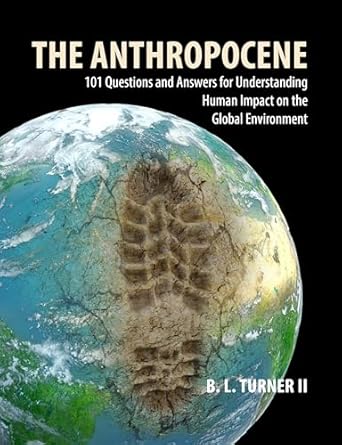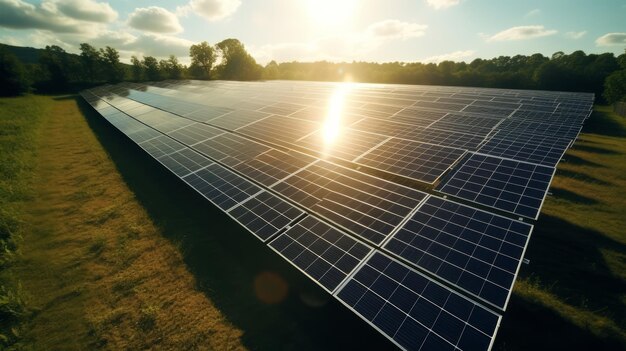
The Anthropocene: Understanding Human Impact on Earth (A Beginner’s Guide)
Are we living in a new geological age? Scientists around the world are increasingly saying "yes." This new age isn’t defined by ancient ice ages or dinosaur eras, but by us – humanity. Welcome to the Anthropocene, a term that highlights the profound and undeniable impact humans are having on our planet.
This long, SEO-friendly article will explore the Anthropocene in detail, explaining what it means, when it might have started, and the major ways human activities are reshaping Earth. We’ll also look at why understanding this concept is crucial and what we can do to navigate this human-dominated epoch.
What Exactly is the Anthropocene, Anyway?
At its simplest, the Anthropocene means the "Age of Humans." It’s a proposed new geological epoch, following the Holocene epoch, which began about 11,700 years ago after the last major ice age.
Think of Earth’s history as a very long book, divided into chapters (epochs). For most of the book, natural processes like volcanic eruptions, asteroid impacts, and ice ages were the main authors of change. But in this new "Anthropocene" chapter, humans have become the dominant force, shaping the planet’s geology, ecosystems, and atmosphere in unprecedented ways.
Key things to remember about the Anthropocene:
- It’s a geological concept: It’s about long-term, irreversible changes to Earth’s rock layers, soils, atmosphere, and oceans.
- It’s driven by humans: Our activities, from burning fossil fuels to creating vast cities, are leaving a lasting mark.
- It’s still being debated: While many scientists agree on the concept, the official start date and formal recognition are still under discussion.
When Did It Begin? Tracing Our Footprint Through Time
Unlike previous geological epochs that began with clear natural events, pinpointing the start of the Anthropocene is tricky because human impact has been growing gradually for thousands of years. However, scientists are looking for a clear "golden spike" – a global signal that would be preserved in future rock layers.
Here are some of the leading contenders for the Anthropocene’s beginning:
-
Early Agriculture (around 8,000 – 5,000 years ago):
- The Idea: Humans started clearing forests for farming and raising livestock, leading to early changes in land use and greenhouse gas emissions (like methane from rice paddies and livestock).
- The Mark: Evidence of large-scale deforestation and early agricultural practices can be found in pollen records and soil composition.
-
The "Orbis Spike" (around 1610 CE):
- The Idea: This theory points to the period after European colonization of the Americas. The massive depopulation of indigenous peoples led to large areas of farmland returning to forest, causing a measurable drop in atmospheric carbon dioxide (CO2). It’s a unique, albeit tragic, global human-induced CO2 dip.
- The Mark: A dip in atmospheric CO2 levels, recorded in ice cores, and changes in land use.
-
The Industrial Revolution (late 18th century onwards):
- The Idea: The invention of the steam engine and the widespread burning of coal began pumping massive amounts of CO2 into the atmosphere. This marked the start of fossil fuel reliance.
- The Mark: A significant increase in atmospheric CO2, acid rain (sulfur deposits), and other industrial pollutants found in ice cores and sediment layers.
-
The Great Acceleration (mid-20th century, especially post-1945):
- The Idea: This is currently the most favored candidate. After World War II, there was an unprecedented boom in human population, economic activity, energy consumption, and global connectivity. This led to a dramatic and rapid increase in almost every indicator of human impact.
- The Mark: A sharp rise in carbon dioxide, methane, and nitrous oxide in the atmosphere; widespread presence of plastic, concrete, and aluminum; nuclear fallout from atomic bomb tests (a clear, globally distributed marker); and a massive increase in biodiversity loss. This period truly shows human activity scaling up to a global, geological force.
How Are We Leaving Our Mark? Key Impacts of the Anthropocene
The "Age of Humans" is characterized by several major ways we are changing Earth’s natural systems. These impacts are interconnected, meaning a change in one area often has ripple effects in others.
1. Climate Change & Global Warming
This is perhaps the most well-known and far-reaching impact. Our reliance on burning fossil fuels (coal, oil, natural gas) for energy releases vast amounts of greenhouse gases, primarily carbon dioxide (CO2), into the atmosphere.
- The Problem: These gases trap heat, leading to a rise in Earth’s average temperature, known as global warming.
- The Effects:
- More frequent and intense extreme weather events: Heatwaves, droughts, floods, wildfires, and severe storms.
- Melting glaciers and ice sheets: Contributing to rising sea levels.
- Rising sea levels: Threatening coastal communities and ecosystems.
- Ocean acidification: Oceans absorb excess CO2, becoming more acidic, which harms marine life like coral reefs and shellfish.
- Changes in agricultural patterns: Impacting food security.
2. Biodiversity Loss & Extinction
Humans are causing species to disappear at an alarming rate, far exceeding natural extinction rates. This is often referred to as the "sixth mass extinction event" in Earth’s history.
- The Problem: We are destroying and fragmenting natural habitats, introducing invasive species, over-harvesting resources, polluting environments, and contributing to climate change, all of which stress and eliminate species.
- The Effects:
- Loss of unique species: Once a species is gone, it’s gone forever.
- Disruption of ecosystems: Every species plays a role; removing one can destabilize entire food webs and natural processes (e.g., pollination, pest control).
- Reduced ecosystem services: The benefits nature provides us for free, like clean air and water, fertile soil, and disease regulation, are diminished.
3. Widespread Pollution (Air, Water, Land, Plastic)
Our industrial activities and consumption habits generate enormous amounts of waste and pollutants that contaminate every corner of the planet.
- Air Pollution: Emissions from factories, vehicles, and agriculture create smog, acid rain, and contribute to respiratory illnesses.
- Water Pollution: Industrial waste, agricultural runoff (pesticides, fertilizers), sewage, and microplastics contaminate rivers, lakes, and oceans, harming aquatic life and human health.
- Land Pollution: Landfills overflowing with non-biodegradable waste, toxic chemicals leaching into soil, and deforestation degrade land quality.
- Plastic Pollution: A relatively new but massive problem. Billions of tons of plastic have been produced, much of which ends up in oceans and natural environments, breaking down into microplastics that enter the food chain.
4. Deforestation & Land-Use Change
Humans have transformed more than three-quarters of the Earth’s land surface, primarily for agriculture, urbanization, and resource extraction.
- The Problem: Forests are cleared for farming, cattle ranching, logging, and urban development. Wetlands are drained, and natural landscapes are paved over.
- The Effects:
- Habitat loss: A primary driver of biodiversity loss.
- Increased greenhouse gas emissions: Forests absorb CO2; cutting them down releases stored carbon and reduces Earth’s ability to "breathe."
- Soil erosion and degradation: Leading to desertification.
- Disruption of water cycles: Affecting rainfall patterns and water availability.
5. Resource Depletion
Our growing population and consumption patterns are rapidly depleting Earth’s finite resources.
- The Problem: We are extracting fossil fuels, minerals, fresh water, and timber at rates that are unsustainable.
- The Effects:
- Scarcity and conflict: Competition for dwindling resources can lead to social unrest and geopolitical tensions.
- Environmental damage: Mining, drilling, and water extraction often have devastating local environmental impacts.
- Economic instability: Dependence on finite resources creates vulnerabilities.
Why Does Understanding the Anthropocene Matter?
Recognizing the Anthropocene isn’t just about naming a geological period; it’s about understanding our responsibility and agency as the dominant force on Earth.
- It highlights our power: We now have the ability to fundamentally alter Earth’s systems on a planetary scale. This power comes with immense responsibility.
- It demands a new perspective: We can no longer view human society as separate from nature. We are deeply embedded in and dependent on Earth’s systems.
- It emphasizes interconnectedness: The impacts described above are not isolated. Climate change exacerbates biodiversity loss, deforestation contributes to climate change, and pollution affects both.
- It urges action: Understanding the scale of our impact is the first step towards making informed decisions about how we want to shape the future of our planet and our own well-being.
- It’s about our future: The changes we are enacting now will affect generations far into the future, long after we are gone.
Looking Forward: Solutions and a Sustainable Future
While the scale of human impact can seem overwhelming, the Anthropocene isn’t just a story of destruction; it’s also a story of human ingenuity and our capacity for change. The recognition of our impact empowers us to act differently.
Here are key areas where we can work towards a more sustainable future:
1. Global Cooperation and Policy
Tackling planetary-scale problems requires global solutions.
- International Agreements: Like the Paris Agreement on climate change, aiming to limit global warming.
- Conservation Initiatives: Protecting critical habitats and endangered species through international efforts.
- Sustainable Development Goals (SDGs): A blueprint adopted by the United Nations for peace and prosperity for people and the planet.
- Research and Monitoring: Continued scientific study to understand impacts and inform solutions.
2. Technological Innovations
New technologies offer promising ways to reduce our footprint.
- Renewable Energy: Shifting from fossil fuels to solar, wind, hydro, and geothermal power.
- Carbon Capture and Storage: Technologies that remove CO2 from the atmosphere or prevent it from entering.
- Sustainable Agriculture: Practices that reduce water use, pesticide reliance, and soil degradation (e.g., vertical farming, precision agriculture).
- Circular Economy: Moving away from a "take-make-dispose" model to one where products are designed for durability, reuse, repair, and recycling.
3. Policy and Governance
Governments and institutions play a crucial role in setting the framework for change.
- Regulations: Setting limits on pollution, protecting natural areas, and promoting sustainable practices.
- Incentives: Offering tax breaks or subsidies for renewable energy, energy-efficient homes, and sustainable businesses.
- Investment: Funding research, infrastructure, and education related to sustainability.
- Protecting Indigenous Rights: Recognizing the vital role indigenous communities play in stewarding natural resources and traditional ecological knowledge.
4. Individual Actions
While global efforts are essential, individual choices collectively create significant change.
- Reduce, Reuse, Recycle: Minimizing waste and maximizing the lifespan of products.
- Conscious Consumption: Choosing products that are ethically sourced, durable, and have a lower environmental footprint.
- Energy Efficiency: Saving energy at home (insulation, LED lights) and choosing energy-efficient appliances.
- Sustainable Transportation: Walking, cycling, using public transport, or opting for electric vehicles.
- Dietary Choices: Reducing meat consumption, especially red meat, which has a high environmental impact.
- Support Sustainable Businesses: Choosing companies committed to environmental responsibility.
- Advocacy: Speaking up, voting for environmentally conscious leaders, and supporting environmental organizations.
- Educate Yourself and Others: Spreading awareness about the challenges and solutions.
Conclusion
The Anthropocene is a powerful concept that forces us to confront our role as Earth’s primary geological force. It’s a reminder that we are not just passengers on this planet but active shapers of its destiny. The challenges are immense, from a rapidly changing climate to the loss of countless species, but so is our capacity for innovation, cooperation, and change.
Understanding the Anthropocene isn’t about fear; it’s about empowerment. It’s about recognizing that the future of Earth is, to a significant extent, in our hands. By embracing sustainable practices, demanding responsible governance, and fostering a deep respect for the natural world, we can strive to make the Anthropocene an era defined not just by human impact, but by human responsibility and a renewed commitment to a thriving planet for all.



Post Comment